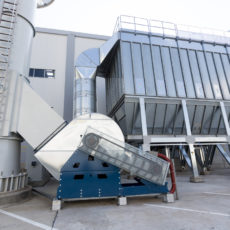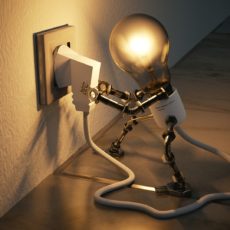
We are witnessing an efficiency revolution when it comes to energy consumption. Governments, private businesses, and individuals are increasing their education about energy efficiency and the multiple ways it can positively affect the world around us. Efficient use of energy leads to less pollution, while optimization of energy use can subsequently lead to an optimized cost of operation. This is true for all functioning units from an individual to a large corporation.
In the past, we were guilty of not considering the impact of excessive energy use, there are simple and easy to implement conservation measures that are used to be more efficient. All conservation methods, when applied properly, will pay big dividends in the long run however as with any investment there is a wide spectrum of cost attached from little or no cost to a larger investment.
Methods involving no cost begin with responsible housekeeping. Turning the water heater off when leaving the house or turning off the lights in rooms that are not being used. Disconnect appliances not in use or switch off at the wall to avoid “Vampire Power”, which is the energy consumed when a product is in standby. Large office buildings are often criticized for claiming to be a green workplace when they do not tackle this issue. The Lawrence Berkeley National Laboratory states that Energy from devices such as computers left on standby account for 5-10% of the total electricity used in residential homes. This is significantly higher for office buildings where computer positioning is condensed.

Other ways to be more effective when examining a busy office include, the lights and air conditioning should always be turned off in meeting rooms that are not being used, lowering the temperature by a few degrees in heated rooms and add more clothing. Small changes in behaviour will provide significant reductions in the energy footprint. The cost of running an office is already significant but with small consolidation efforts from employees, costs will be trimmed significantly, both financially and environmentally.
Next time you are shopping for light bulbs, look for a more efficient option. Install sensor lights in areas that you frequent but don’t provide convenient switch locations like the front / back porch.
Investing in improving the already existing state of a building in order to be more energy efficient is of a larger cost investment in energy conservation. Frequent examples are insulation improvement for walls and roof, installation of solar panels on rooftops, and switching the water heating to more efficient equipment.
Modernizing energy consumption in older buildings is a key focus due to their high energy consumption and the fact that new buildings are now built with these reduction strategies in mind. New office buildings are constantly introducing new energy saving solutions like smart lighting, solar panels, better insulation and protection from heat and cold, smart metering for electrical energy consumption measurement and control. Many governments are providing incentives for construction companies that are conscious of energy efficiency and carbon footprint when building.
Energy conservation is a significant factor in reducing the overall energy footprint. Whilst not all of the energy saving techniques are practical, any steps taken will contribute to the reduction of both energy consumption and overall costs to a consumer



